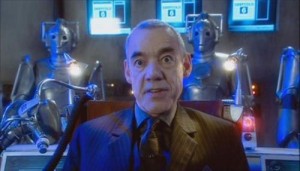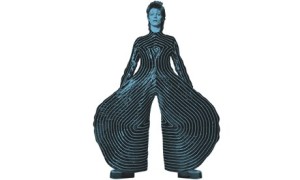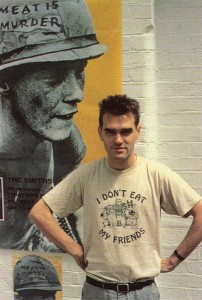Last week on apoplectic.me, in episodes 1 and 2 of the sixth Digesta Plaga, I wrote about the latest developments in blood pressure guidelines, and the news in cyber assistance for stroke patients and survivors of traumatic injuries. In the dramatic conclusion of part one, we left real world creator of the Cybermen, medical scientist Dr Kit Pedler, discussing the nature of life with his wife over the dinner table.

3. Is There Life Of Mars? Fifty years later — and since the time of the ancient Greeks, who examined just this question — we’ve had a terrible time expressing exactly what differentiates life from what is not alive. I think that’s why, without knowing it, the Cybermen always fascinated me. Why people still speak of Metropolis in hushed tones. Why Blade Runner, populated by complex characters like Rick Deckard and Roy Batty, is a modern classic.

Ferris Jabr, whose blog is in the blogroll to the right of this page, and inspired my recent self-vivisection, wrote about scientific attempts to concisely define life in Scientific American’s Brainwaves at the beginning of the month. Aristotle’s theory that “all living things have one of three kinds of souls: vegetative souls, animal souls and rational souls, the last of which belonged exclusively to humans” doesn’t even rate a reasoned dismissal.

17th century vitalism asserted that “living organisms… contain some non-physical element or are governed by different principles than are inanimate things” and that organic matter could not arise from inorganic matter has been disproved by the discovery that “the inorganic can be converted into the organic both inside and outside the lab.” The modern bibles of the standard biology textbooks have been reduced to replicating shopping lists of distinguishing characteristics. But there are always exceptions. Crystals are highly organized and grow. Fire consumes energy and gets bigger. Some crustaceans can enter long periods of dormancy during which they are not growing, metabolizing or changing at all. And on and on.

Eventually, in the 1990s, an advisory panel to NASA came up with what Ferris acknowledges as a “lucid, concise and comprehensive” definition of life:
A self-sustaining system capable of Darwinian evolution.
But this doesn’t work either. According to this definition, a parasitic worm living inside a person’s intestines is not alive. Certain modern computer programs and platforms, on the other hand, do evolve and mutate within a self-contained context. RNA enzymes — or ribozymes — also satisfy the test. A member of the NASA advisory panel suggests that ribozymes mean we have to add another element to the test: to be alive, an organism needs to be “inventive, needs to come up with new solutions.” And already, we’re heading back to the textbook shopping list.

As of the morning of Monday 30 December, 2013, scientists and philosophers still haven’t come up with a specific set of physical properties that clearly separates the living from the inanimate. But Ferris Jabr takes a stab at explaining why:
[S]uch a property does not exist. Life is a concept that we invented…. Arrangements of atoms and particles fall onto an immense spectrum of complexity. In trying to define life, we have drawn a line at an arbitrary level of complexity and declared that everything above that border is alive and everything below it is not.
For all our complexity, I would suggest, we are finding it hard to break free of our Aristotlean chains of self-importance. Humans are special, right? And so we come crashing towards our denouement, like the Fifth Doctor crashing onto Androzani Minor….

4. Meat Is… Animal Flesh That Is Eaten As Food (Or Is It?) Mrs Stroke Bloke might shy away from going here, having experienced the knee-jerks of committed carnivores since she was six. But I have the zeal of the recent convert, the born-again. So, if you want to know what is involved in delivering succulent animal flesh that is eaten as food, read this Rolling Stone article. It’s a hot, dank, bloody pile of facts and statistics.

Here’s a taste (of meat):
- Dimensions of the metal crates breeding cows are confined to for life: 7ft x 2ft
- Ranking of pigs on Animal Planet’s top 10 smartest animals list: 6th
- Age at which humans are as smart as pigs: 3
Why aren’t we farming human babies and slaughtering them for food? Because they’re just complex enough? Have you ever tried discussing Proust with a toddler?
Or because we’re special? How so?
I suppose it doesn’t matter, as long as one Nebraska slaughterhouse can execute one cow every twelve seconds. Or 2,500 cows a day. The picture the Rolling Stone article paints is nauseating. If you read it, you’ll either have to stuff it down your memory hole, or become a vegetarian.

I say this as someone who will still acknowledge that the fillet mignon at Rothmann’s Steakhouse was one of the tastiest things I ever ate. But worth our fellow complex organisms being converted into meat in circumstances more horrifying that you could possibly imagine? Worth the environmental carnage of the 35,000 miles of U.S. waterways reported as polluted due to 500 million tons of animal waste generated by the country’s factory farms each year? Worth making the stunted lives of animals hell so we can eat the cheap meat that lets us think we’re living high on the hog? (As a reward for getting this far, I’ll spare you my half-baked socialist analysis of what’s going on here.)

Not when vegetarianism imposes only the minimal restrictions that encourage the vegetarian to eat a varied and interesting diet — a bit like creating art. Not when the Quorn lasagne I had for the Saturnalia feast was so delicious. Not when…
A @QuornFoods Family Roast proves you can have a satisfying, traditional meal without unduly damaging the environment or animal welfare. — Ricky Brown (@ricky_ballboy) November 22, 2013

This all ties into the discussion of blood pressure guidelines and stroke recovery in Part One of Digesta Plaga #6 because, as the U.S. National Stroke Association points out, “High cholesterol… in the arteries can block normal blood flow to the brain and cause a stroke. High cholesterol may also increase the risk of heart disease and atherosclerosis, which are both risk factors for stroke.” And… Cholesterol is only found in animal products So as Hogmanay and the new year approach, best wishes for a happy and healthy new year for you and yours from Stroke Bloke. As you consider your resolutions in a mindful manner, why not set aside a few minutes to read the Rolling Stone article? Why not?





Is a tonne different from a ton? Besides the spelling.
Yup. It’s like football. As I understand it, there’s an American ton. And a rest-of-the-world ton. And also a tonne, known as a “metric ton”, which is 1,000kg. “American English speakers generally have no use for tonne.”
So. Yeah. I’ve changed that to “ton” to reflect the original stat.
“apoplectic.me: Valuing accuracy and fact-checking since 1903.”
I thought so.
First I’m doing my part to get the comment count up!
Second rolling stone? After the hatchet job they did on the financial crisis I think they can be safely ignored on any topic other than rock music before about 1976, after which they squarely missed the point.
But try reading Michael pollen and the omnivore’s dilemma for a good idea on the meat quandary.
You will be unsurprised to find out that I think economics play a part. A healthy ethically raised chicken will cost about 12 bucks in your local butcher shop. But folks want to pay 3 bucks. So there you go. The rest is details, just like tee shirts and coal plants.
Another interesting question for you. If the entire world became vegetarian what would happen to our pig population? Plummet right. Is it better to have been born and bacon than never to have been born at all?
Happy new year!
People do only want to pay 3 bucks. They need to know what they’re getting for that though. Most don’t.
That information has been available for decades. People simply don’t care about happy chicken vs cheap chicken in most of the country.
Wonder how many people are talking about the rolling stone article with their friends at a Denny’s?
But remember – I don’t like people so…
Thanks, Paul! I’ll admit that when RS can’t get the important things like the 50 albums of the year right, one has to be sceptical (that’s like metric skepticism). But the article’s very verifiable-fact-heavy, and it paints a picture that’s identical to how I remember Howard Lyman’s 1998 Mad Cowboy. I’ll add Omnivore’s Dilemma to the info pile.
You will be unsurprised to find out that I also think economics play a part. But $3 chicken doesn’t cost $3. We’re paying environmentally, in subsidies and tax breaks, the dehumanization of the factory farm workforce, and the destruction of an economically sustainable farming model. Also in the level of ignorance society at large has to maintain to accept this situation. If the true cost of an ethical, Randy Cohen-reading, chicken is $12, I’d be interested in crunching the numbers to find the true cost of a chicken wearing years of its factory-mate’s shit as a second skin.
Then we get to the socialist questions. Why is a steak the symbol we need to tell us we’re living the American Dream? Why is the cook-out the opiate? And why can the average American only afford $3 for her chicken?
Finally, thanks for taking the polemic and the topics in the TinyLetter distribution in the curious spirit they were intended. It’s good the kick the perspectives around, even if I fear I’ll never want a Rothmann’s steak again.
Happy new year to you, too!
We should all eat less meat. However the progression of Man was in fact due to the protine in meat which made the brain progress faster. Tofu diets weren’t yet invented but brontosaurus burgers ( medium rare of course) were popular. Eat more fish?
All true. BBC Radio 4’s A History Of The World In 100 Objects makes this point well. No big meaty brain = no tools. No tools = less meat = no big meaty brain – no evolutionary jump. And no 2001 Star Child.
Can’t argue with that. But I’d argue it’s not those days any more, and we have invented tofu diets. Lab grown meat, even! Following the economic analysis, maybe meat is evolving towards being a nostalgic treat for those who can afford it…?
As with Paul, thanks for taking the polemic in the spirit it was intended!